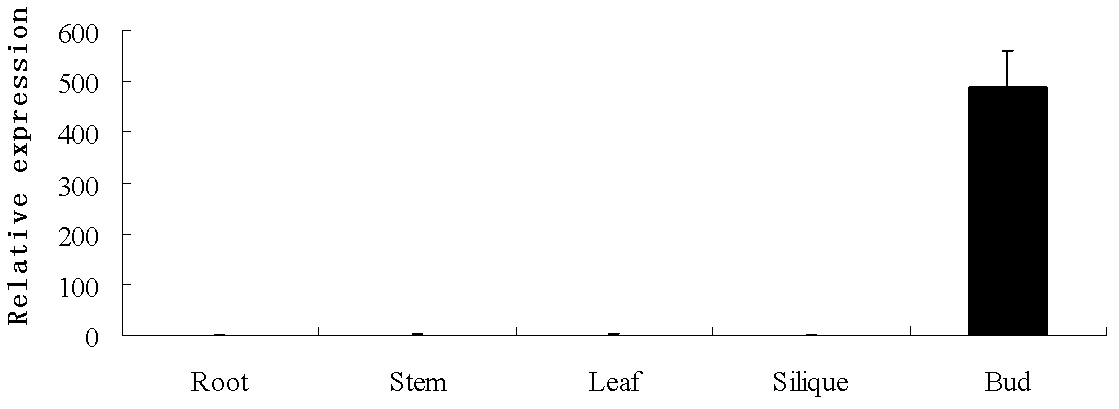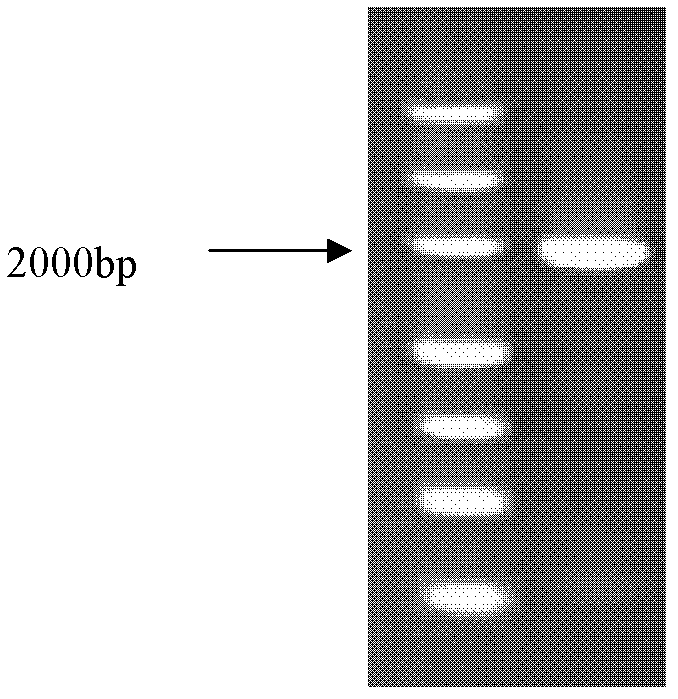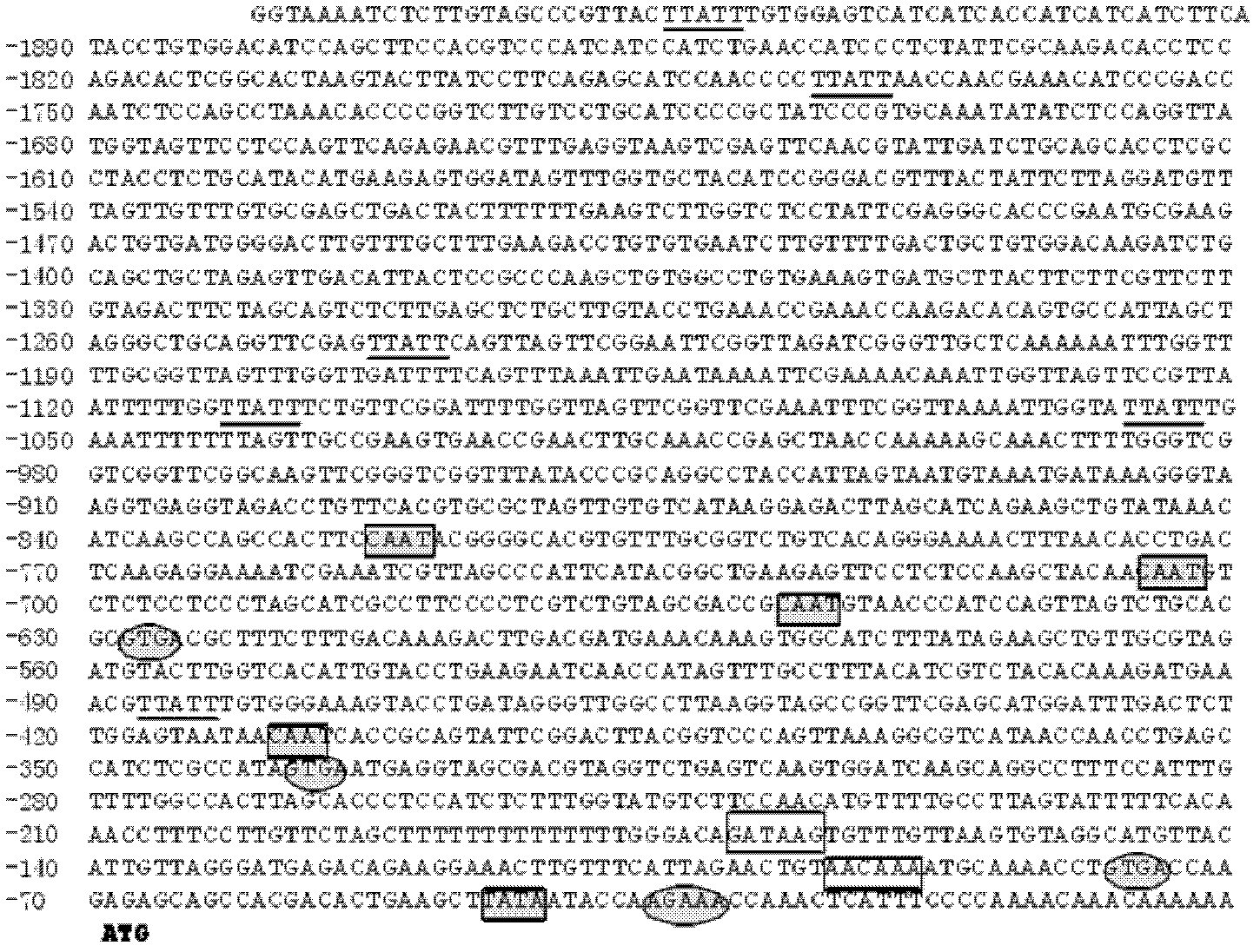Brassica napus BnCP51 promoter as well as preparation method and application of promoter
A cabbage rape and promoter technology is applied in the field of plant genetic engineering and biology, and can solve the problems of unsuitable production practice, unfavorable normal growth of plants, harmful ecological environment and the like
- Summary
- Abstract
- Description
- Claims
- Application Information
AI Technical Summary
Problems solved by technology
Method used
Image
Examples
Embodiment 1
[0068] Rapeseed P BnCP51 Expression pattern analysis of driven endogenous genes:
[0069] The rapeseed used in the present invention is Brassica napus L. . The test materials were sown in the field and managed normally.
[0070] Take roots, stems, leaves, flower buds, and siliques from fertile plants with the same growth conditions in the field. Take at least three replicates of each material, and at least one plant for each replicate. After sampling, wrap them in tin foil and place them in liquid nitrogen immediately. medium, stored at -80°C. RNA was extracted (method described above). The fluorescent quantitative PCR instrument was IQ5 (Bio-Rad Company), and rape Actin (accession number AF111812) was used as the internal standard gene. The Actin gene primers were forward primer 5′-CTGGAATTGCTGACCGTATGAG-3′ and reverse primer 5′-ATCTGTTGGAAAGTGCTGAGGG-3′. Rapeseed P BnCP51 The driven endogenous gene primers are 5'AGGACTCAAGGTGCTGTGACTCCTAT3' and 5'CTGAGAGAGACACTAAATTCCCT...
Embodiment 2
[0074] A brassica napus promoter P BnCP51 The preparation method of promoter, its step is:
[0075] 1. Rapeseed promoter P BnCP51 The primer sequence:
[0076] According to the upstream 2kb sequence of the BnCP51 gene obtained from rapeseed whole genome sequencing, a pair of primers were designed for PCR amplification. 3'.
[0077] 2. Preparation of rapeseed promoter PBnCP51:
[0078] Utilize the SDS lysis method (described above) to extract the genomic DNA of rapeseed leaves, and use this as a template to carry out PCR amplification. The steps are: extract 25 μl of genomic DNA, and use this as a template to amplify. The reaction system is 50 μl, and 10×Ex Taq buffer 5 μl, dNTP 4 μl, 5’ primer 1 μl, 3’ primer 1 μl, ExTaq 0.5 μl, DNA template 1 μl about 100ng, ddH 2 O 37.5 μl. The primers used in PCR were designed according to the upstream 2kb sequence of BnCP51 gene obtained by whole genome sequencing of rapeseed: PBnCP51S: 5′-(KpnI)CGGGGTACCGGTAAAATCTCTTGTAGCCCGT-3′ and...
Embodiment 3
[0082] pBI-P BnCP51 Arabidopsis transformation and PCR detection:
[0083] Arabidopsis thaliana was transformed by the inflorescence infection method (Zhang X R. et al. Agrobacterium-mediated transformation of Arabidopsis thaliana using the floral dip method. Nature, 2006, 1:1-6). It was grown on the MS (mentioned above) medium containing 50 mg / L kanamycin, and the green shoots obtained were preliminarily considered to be transformed plants. After the transformed plant grew two true leaves, it was transplanted into vermiculite. After the plant appeared inflorescence, a true leaf was taken to extract genomic DNA (described above) by SDS method for PCR identification. The primer sequences are NPT II F: 5′GATGGATTGCACGCAGGT3′ and NPT II R: 5′-TCAGAAGAACTCGTCAAG-3′; the PCR reaction system is as follows: template DNA 1μL (about 100ng), 10×Taq buffer (containing MgCl 2 ) 1 μl, 1.5mmol / L dNTP (10mmol / L) 1μl, 5’ primer (10μmol / L) 0.5μl, 3’ primer (10μmol / L) 0.5μl, Taq (5U / μl) 0.5μl...
PUM
 Login to View More
Login to View More Abstract
Description
Claims
Application Information
 Login to View More
Login to View More - R&D
- Intellectual Property
- Life Sciences
- Materials
- Tech Scout
- Unparalleled Data Quality
- Higher Quality Content
- 60% Fewer Hallucinations
Browse by: Latest US Patents, China's latest patents, Technical Efficacy Thesaurus, Application Domain, Technology Topic, Popular Technical Reports.
© 2025 PatSnap. All rights reserved.Legal|Privacy policy|Modern Slavery Act Transparency Statement|Sitemap|About US| Contact US: help@patsnap.com



